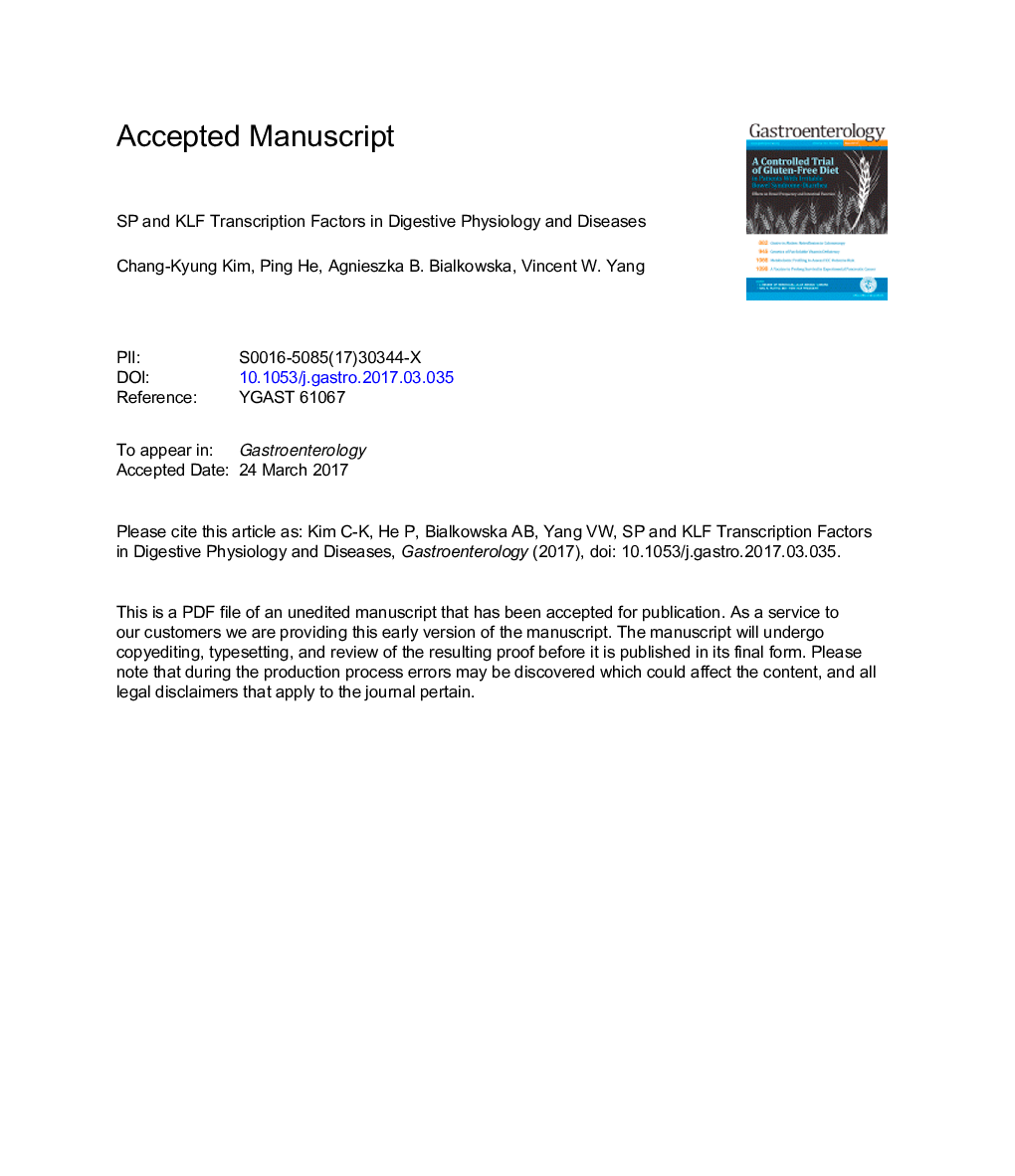| Article ID | Journal | Published Year | Pages | File Type |
|---|---|---|---|---|
| 5658345 | Gastroenterology | 2017 | 60 Pages |
Abstract
Specificity proteins (SPs) and Krüppel-like factors (KLFs) belong to the family of transcription factors that contain conserved zinc finger domains involved in binding to target DNA sequences. Many of these proteins are expressed in different tissues and have distinct tissue-specific activities and functions. Studies have shown that SPs and KLFs regulate not only physiological processes such as growth, development, differentiation, proliferation, and embryogenesis, but pathogenesis of many diseases, including cancer and inflammatory disorders. Consistently, these proteins have been shown to regulate normal functions and pathobiology in the digestive system. We review recent findings on the tissue- and organ-specific functions of SPs and KLFs in the digestive system including the oral cavity, esophagus, stomach, small and large intestines, pancreas, and liver. We provide a list of agents under development to target these proteins.
Keywords
Muc2cox2MIRPdx1APCGCKBcl2Notch1DSSKRASOSCCWntESCCmRNANHEPPARALNMwingless-type MMTV integration site familySIN3AV-Ki-ras2 Kirsten rat sarcoma viral oncogene homologKLFMMPTGFbHSCPI3KHCCHnfPancreatic and duodenal homeobox 1LSECNa+/H+ exchangerPhosphatidylinositol-4,5-bisphosphate 3-kinasemessenger RNASOxadenomatous polyposis coliPancreatic ductal adenocarcinomaPDAC یا pancreatic ductal adenocarcinomaBaxTransforming growth factor βProliferationDifferentiationEMTApoptosisdigestive systemDevelopmentCancerColorectal cancerliver sinusoidal endothelial cellHepatic stellate cellStem cellsdextran sodium sulfatecyclooxygenase 2hepatocyte nuclear factorKrüppel-like factorB-cell lymphoma 2matrix metalloproteinaseLymph node metastasismucin-2MicroRNAsplice variantspecificity proteinSingle-nucleotide polymorphismCell cycleSNPoral squamous cell carcinomaEsophageal squamous carcinomaHepatocellular carcinomaCRCKeratinKrtepithelial-to-mesenchymal transitionGlucokinasePeroxisome proliferator activated receptor α
Related Topics
Health Sciences
Medicine and Dentistry
Gastroenterology
Authors
Chang-Kyung Kim, Ping He, Agnieszka B. Bialkowska, Vincent W. Yang,
